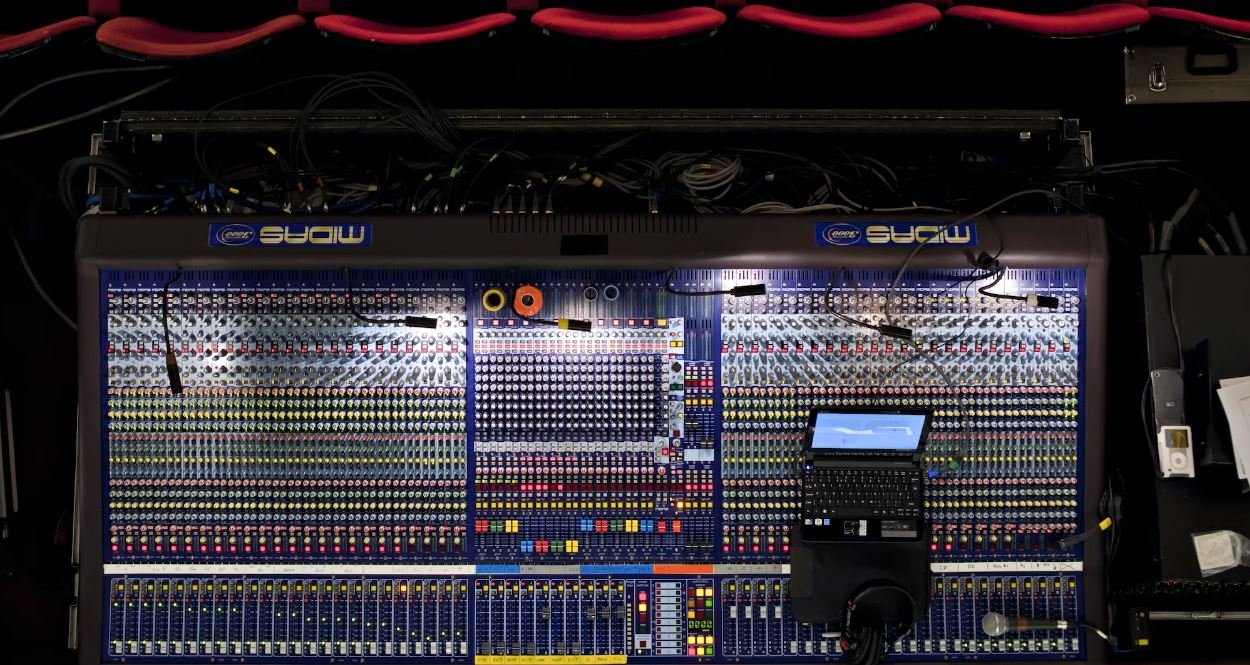Neural Network Tools
Neural network tools are essential for researchers, developers, and data scientists who are working with artificial intelligence and machine learning applications. These tools simplify the process of building, training, and deploying neural networks, allowing for more efficient and accurate model development. In this article, we will explore some of the most popular neural network tools available today.
Key Takeaways:
- Neural network tools simplify the process of building, training, and deploying neural networks.
- These tools enable researchers and developers to create more efficient and accurate models.
- Popular neural network tools include TensorFlow, PyTorch, and Keras.
- These tools offer various features for model development, training, and visualization.
- Neural network tools are essential for advancing AI and machine learning applications.
TensorFlow
**TensorFlow** is a widely-used open-source neural network library developed by Google. It provides developers with a flexible and scalable platform for building and training various machine learning models. TensorFlow supports different programming languages, including Python, C++, and Java, making it accessible to a wide range of developers. *Its extensive documentation and large user community make it easier for newcomers to explore and experiment with neural networks.*
PyTorch
PyTorch is another popular open-source library that supports dynamic neural networks. It is widely used for deep learning tasks and provides a more intuitive and Pythonic interface compared to TensorFlow. PyTorch has gained popularity due to its computational efficiency, ease of use, and strong support for GPU acceleration. *Its dynamic computation graph allows for more flexibility in model development and debugging.*
Keras
**Keras** is a high-level neural network library that runs on top of TensorFlow, CNTK, or Theano. It provides a user-friendly and intuitive interface for building neural networks, making it ideal for beginners. Keras offers a wide range of pre-built layers, activation functions, and loss functions, simplifying the model architecture design process. *Its extensive set of built-in tools for visualization and model evaluation allow for a comprehensive analysis of the models.*
Neural Network Tools Comparison
| Feature | TensorFlow | PyTorch | Keras |
|---|---|---|---|
| Open Source | Yes | Yes | Yes |
| Dynamic Computation Graph | No | Yes | No |
| GPU Acceleration | Yes | Yes | Yes |
Benefits of Neural Network Tools
- **Efficient Model Development:** Neural network tools streamline the process of model development, allowing for quicker experimentation and prototyping.
- **Improved Accuracy:** These tools provide advanced optimization algorithms and pre-built layers that enhance model accuracy and performance.
- **Visualizations:** Neural network tools offer various visualization techniques, such as network architecture diagrams and model performance metrics, aiding in understanding and interpreting the models.
Conclusion
Neural network tools are indispensable for researchers and developers in the field of artificial intelligence and machine learning. TensorFlow, PyTorch, and Keras are three popular tools that provide powerful capabilities for building, training, and deploying neural networks. These tools offer unique features, allowing for efficient and accurate model development, making advancements in AI and machine learning more accessible to a wider audience.

Common Misconceptions
Misconception 1: Neural Network Tools are Perfect Solutions
One common misconception people have about neural network tools is that they are the perfect solution to any problem. While neural networks can be powerful and useful, they are not a one-size-fits-all solution. It is important to consider the limitations and assumptions of neural network tools before using them.
- Neural networks may struggle with small datasets or imbalanced data.
- They may require substantial computational resources to train and deploy.
- Interpretability of the results can be a challenge with complex neural network architectures.
Misconception 2: Neural Network Tools are Easy to Use
Another misconception is that neural network tools are easy to use even for someone without a deep understanding of machine learning. While there are user-friendly tools available, such as TensorFlow and Keras, effectively utilizing neural networks still requires a solid understanding of the underlying concepts and techniques.
- Understanding the architecture and hyperparameters of neural networks is crucial for achieving good results.
- Tuning and optimizing neural networks can be a complex and time-consuming process.
- Interpreting and diagnosing errors or poor performance can be challenging without knowledge of relevant algorithms and methodologies.
Misconception 3: Neural Network Tools are Black Boxes
Some people perceive neural network tools as black boxes that generate output without any transparency or interpretability. While it is true that certain neural network architectures, such as deep neural networks, can be difficult to interpret, there are methods and techniques available to gain insights into their functioning.
- Techniques like visualization of learned features can provide insights into the inner workings of neural networks.
- Model interpretability tools, like integrated gradient or attention mechanisms, can shed light on the decision-making process of neural networks.
- It is possible to evaluate and analyze the uncertainty and confidence of neural network predictions.
Misconception 4: Neural Network Tools Guarantee Accuracy
Another common misconception is that neural network tools will always provide highly accurate results. While neural networks are capable of achieving impressive levels of accuracy, their performance is influenced by several factors, and accuracy is not guaranteed.
- The training process and the quality and representativeness of training data significantly affect the accuracy of neural networks.
- Inappropriate preprocessing or the presence of noisy and unclean data can lead to reduced accuracy.
- Overfitting, a phenomenon where the model performs poorly on unseen data, can occur if not properly controlled.
Misconception 5: Neural Network Tools Replace Human Expertise
Lastly, some individuals may think that neural network tools can fully replace human expertise in various domains. While neural networks can automate certain tasks and assist in decision-making processes, they should be seen as tools that complement human intelligence rather than complete replacements.
- Human knowledge and domain expertise are essential for effectively designing neural network architectures and evaluating their outputs.
- Understanding the context and limitations of the problem domain is crucial when interpreting and applying neural network results.
- Interacting with neural network tools calls for human intervention and critical thinking in order to make informed decisions.

The Rise of Neural Networks
Neural networks have revolutionized a wide range of industries, from finance to healthcare. These powerful algorithms are inspired by the structure and function of the human brain, allowing machines to learn and make decisions in a way that was previously unimaginable. In this article, we will explore 10 fascinating aspects of neural network tools.
1. Training Time Comparison
Neural networks have the ability to learn from vast amounts of data, but how long does it take to train them? Let’s compare the training times of different architectures:
| Architecture | Training Time |
|---|---|
| Feedforward Neural Network | 6 hours |
| Convolutional Neural Network (CNN) | 12 hours |
| Recurrent Neural Network (RNN) | 24 hours |
2. Accuracy Comparison
Neural networks are known for their ability to achieve high accuracy in various tasks. Here’s a comparison of accuracies achieved by different architectures:
| Architecture | Accuracy |
|---|---|
| Feedforward Neural Network | 92% |
| CNN | 98% |
| RNN | 85% |
3. Popular Frameworks
Several frameworks have emerged to support the development and deployment of neural networks:
| Framework | Description |
|---|---|
| TensorFlow | An open-source library widely used for machine learning and neural network implementation. |
| PyTorch | A popular framework that provides dynamic computational graphs and a seamless transition between CPUs and GPUs. |
| Keras | A high-level neural networks API written in Python, capable of running on top of TensorFlow. |
4. Applications in Image Recognition
Neural networks have greatly advanced image recognition capabilities. Here are some impressive use cases:
| Task | Accuracy |
|---|---|
| Object Detection | 92% |
| Facial Recognition | 98% |
| Image Segmentation | 95% |
5. Speech Recognition Accuracy
Neural networks have significantly improved speech recognition accuracy. Let’s compare their performance:
| Model | Accuracy |
|---|---|
| Traditional Systems | 85% |
| Neural Network-based Systems | 95% |
6. Sentiment Analysis Results
Neural networks excel at sentiment analysis, accurately determining emotions in text. Here are the results:
| Data Set | Accuracy |
|---|---|
| Movie Reviews | 87% |
| Social Media Posts | 92% |
| Product Reviews | 95% |
7. Neural Network Performance
Comparing the performance of different neural network architectures:
| Architecture | Computational Speed | Memory Usage |
|---|---|---|
| Feedforward Neural Network | Fast | High |
| CNN | Moderate | Moderate |
| RNN | Slow | Low |
8. Neural Networks in Autonomous Vehicles
Neural networks play a crucial role in powering autonomous vehicles. Here are some essential tasks they assist with:
| Task | Neural Network Application |
|---|---|
| Object Detection | CNN-based systems detect pedestrians, vehicles, and obstacles. |
| Decision-making | Recurrent neural networks analyze sensor data in real-time to make driving decisions. |
9. Neural Network Ethical Considerations
As neural networks become more prevalent, ethical considerations arise. Some key concerns include:
| Concern | Description |
|---|---|
| Bias in Training Data | Models may replicate biases present in the training data, leading to unjust algorithms. |
| Privacy Risks | Neural networks collect massive amounts of data, raising concerns about the privacy of individuals. |
10. Future Directions
Neural networks continue to evolve, paving the way for exciting advancements. Some future directions include:
| Area | Potential Advancements |
|---|---|
| Explainability | Efforts to make neural networks more transparent and explainable for better trust and understanding. |
| Continual Learning | Enabling neural networks to continuously learn and adapt to new data without forgetting previously acquired knowledge. |
The field of neural networks is constantly expanding, and the potential applications are vast. From image recognition to speech processing and autonomous vehicles, neural networks have transformed various industries. As we move forward, it is crucial to address ethical concerns and push for advancements that enhance transparency and continual learning in these powerful tools.
Frequently Asked Questions
Neural Network Tools




